Educators are frequently asked to use research and evidence to support their choices of programs and practices, and yet, it seems like many schools and teachers still struggle to make evidence-based practices part of their daily instruction, especially with students in special education or students with learning difficulties. A rich research base of effective instructional practices exists, but unfortunately, educators often receive inconsistent and confusing information about which practices, curricula, or programs work best with students. Much of this information may come from sources (e.g., teacher self-reports, blogs, for-profit education companies) that do not necessarily conform to high research standards. Though resources like the U.S. Department of Education’s What Works Clearinghouse have made great strides in helping the education community understand and use evidence when making important instructional decisions, a significant number of educators are not aware of these resources and do not apply this guidance in practice. The result of this research-to-practice gap is that teachers do not use the practices that accelerate students’ learning and, thus, struggling students continue to fall further behind their peers.
The “10 Key” Series
Educators need clear guidance on what high-quality research really says about providing effective instruction and support to students, especially those with learning difficulties. To address this need, The Meadows Center for Preventing Educational Risk distilled the latest research findings for various content areas into concise top 10 lists, which describe the most important practices and policies, according to high-quality research, that should be in place in every school. The lists are available for free download to share across districts, at school staff meetings, in professional learning communities, or even with parents.
The series includes top 10 lists for the following areas:
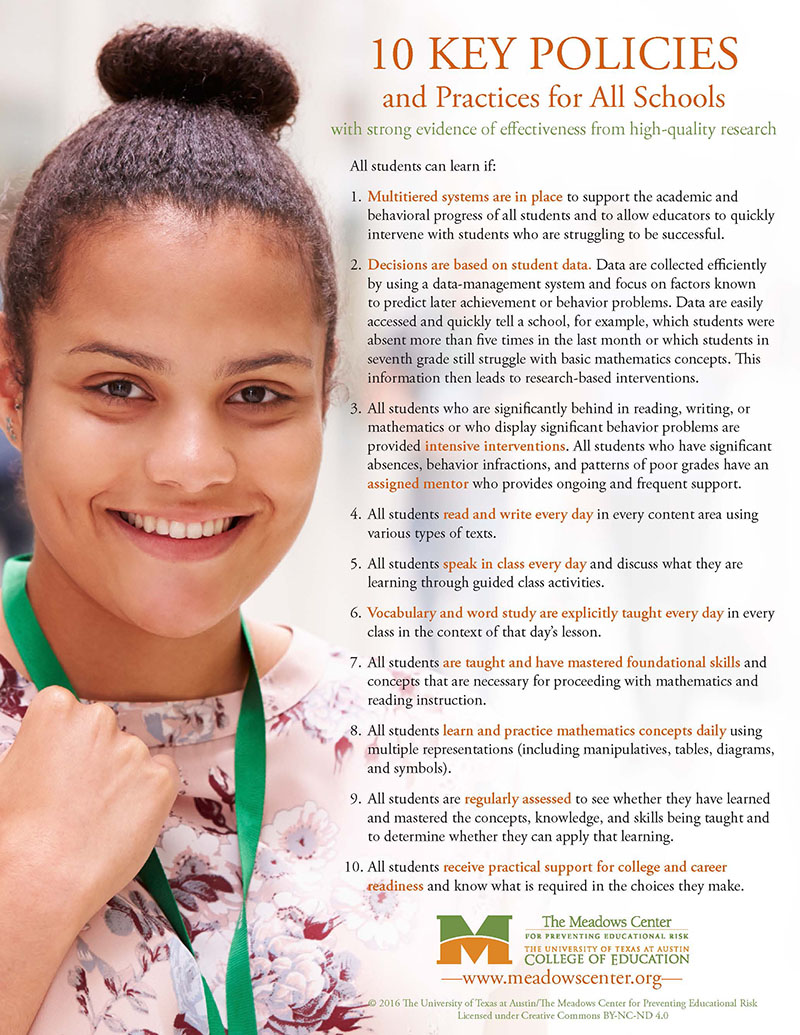
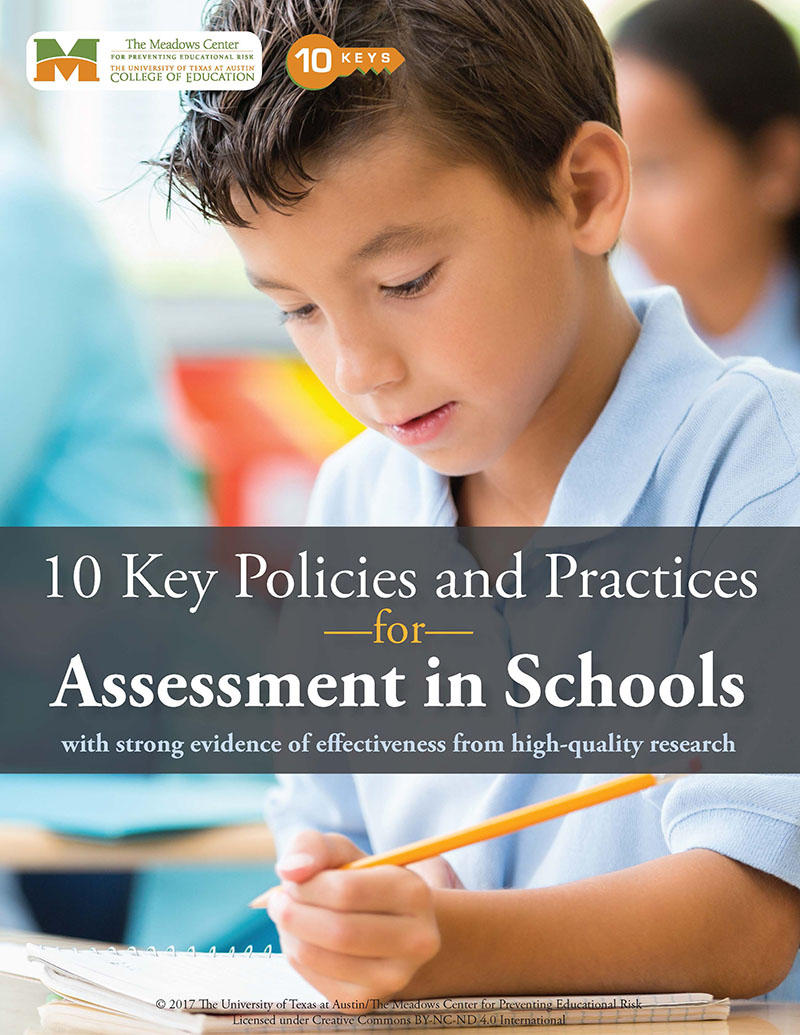
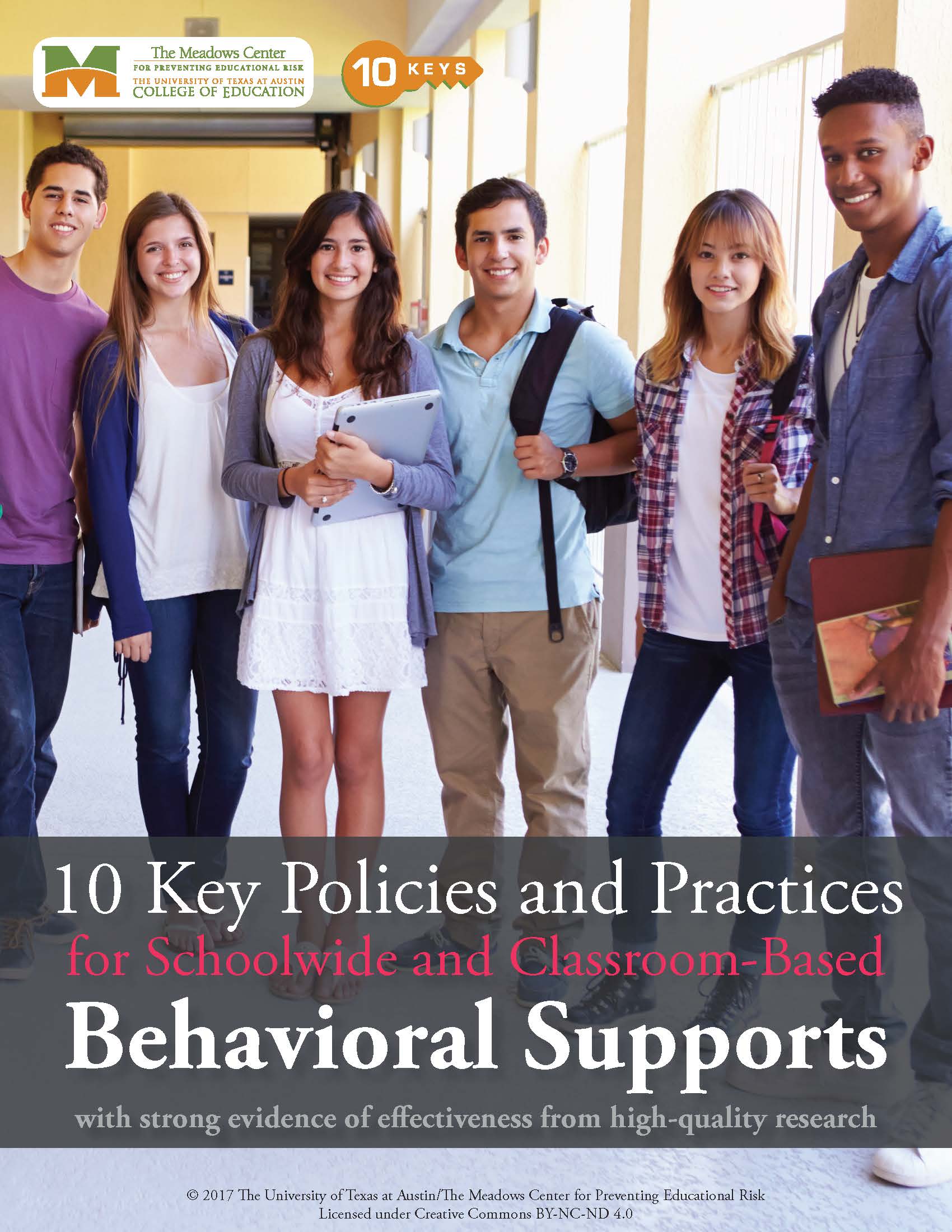
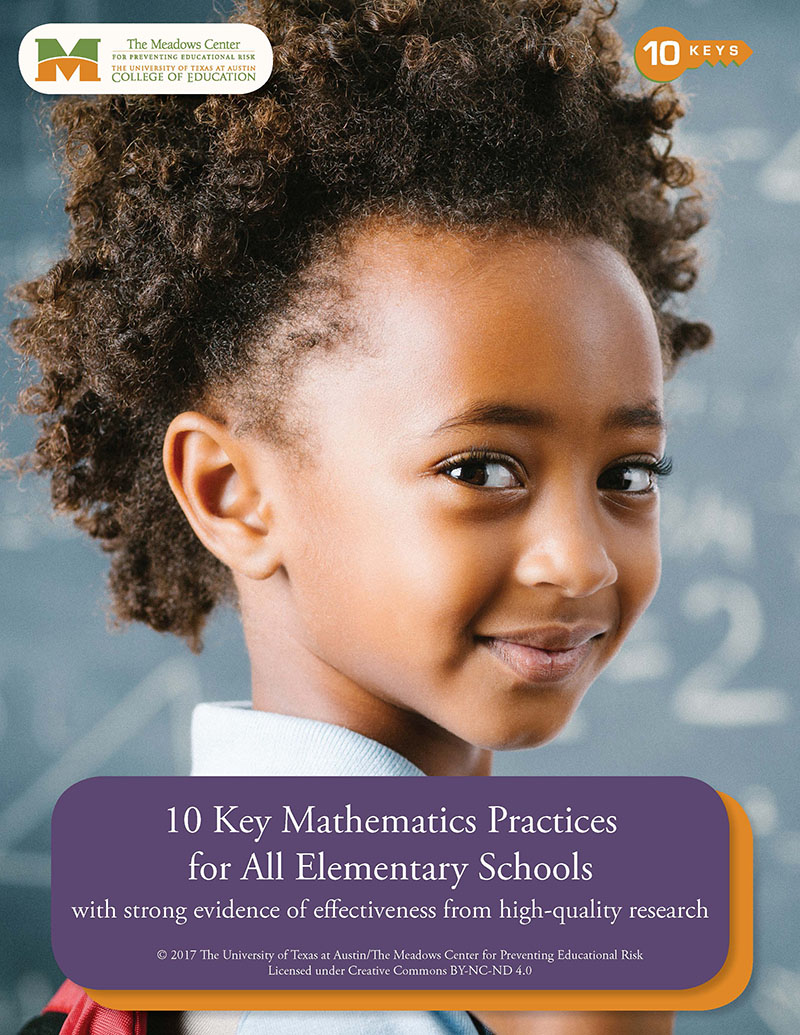
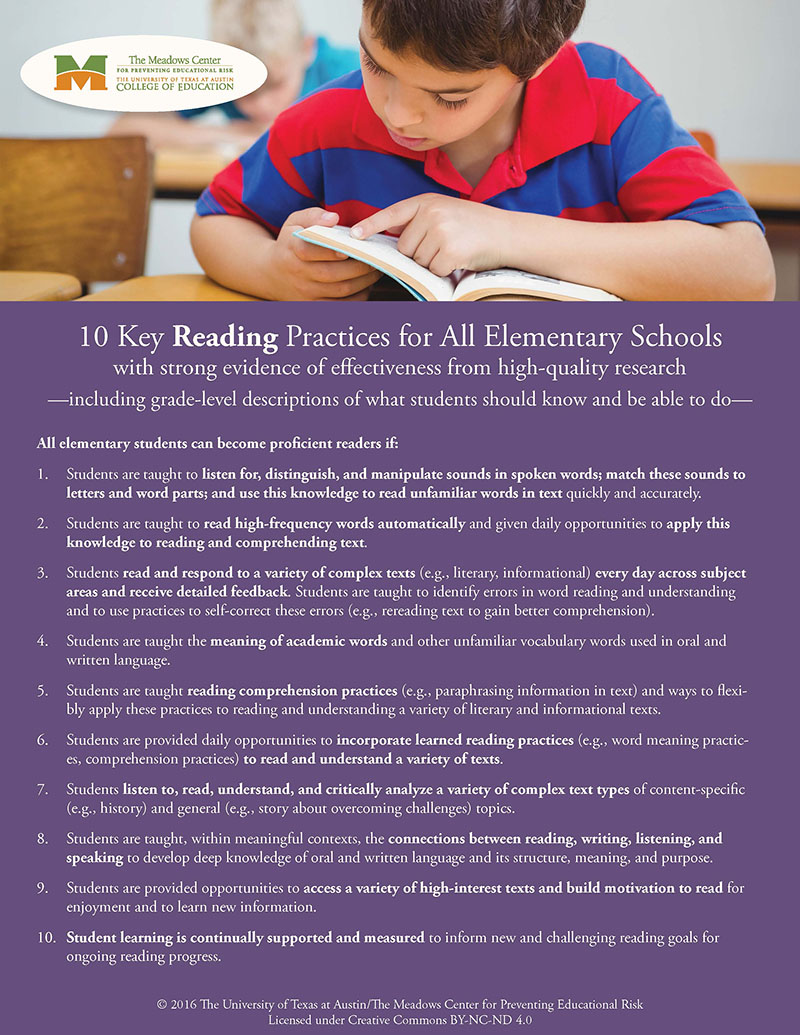
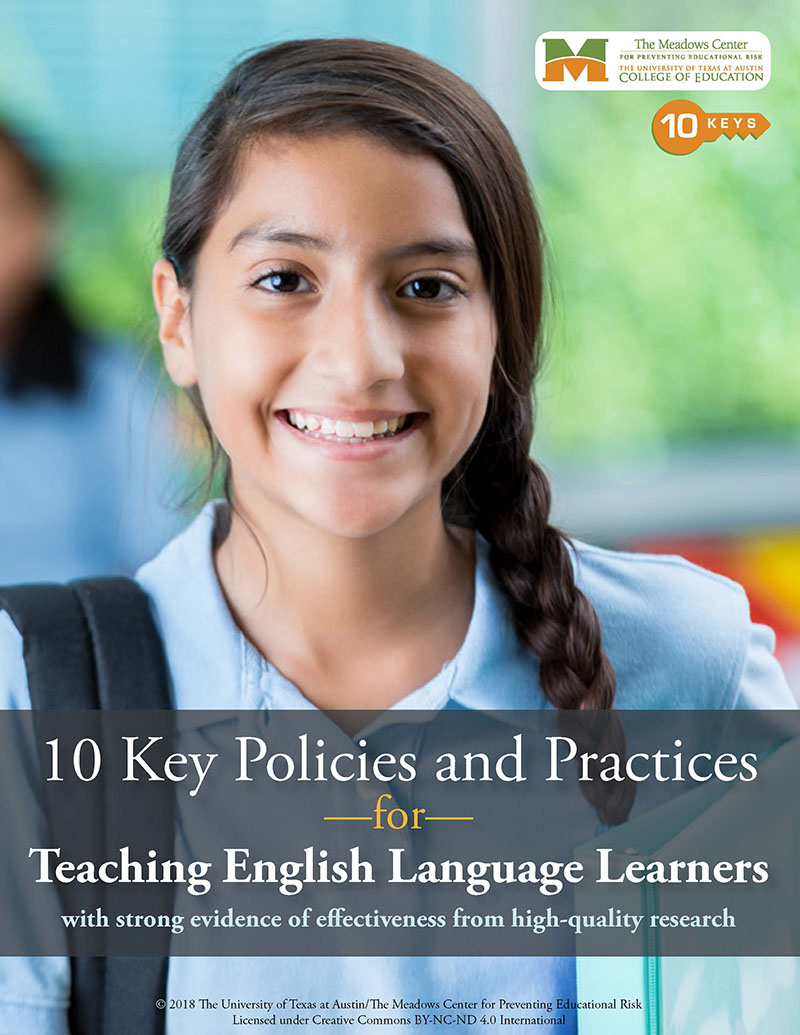
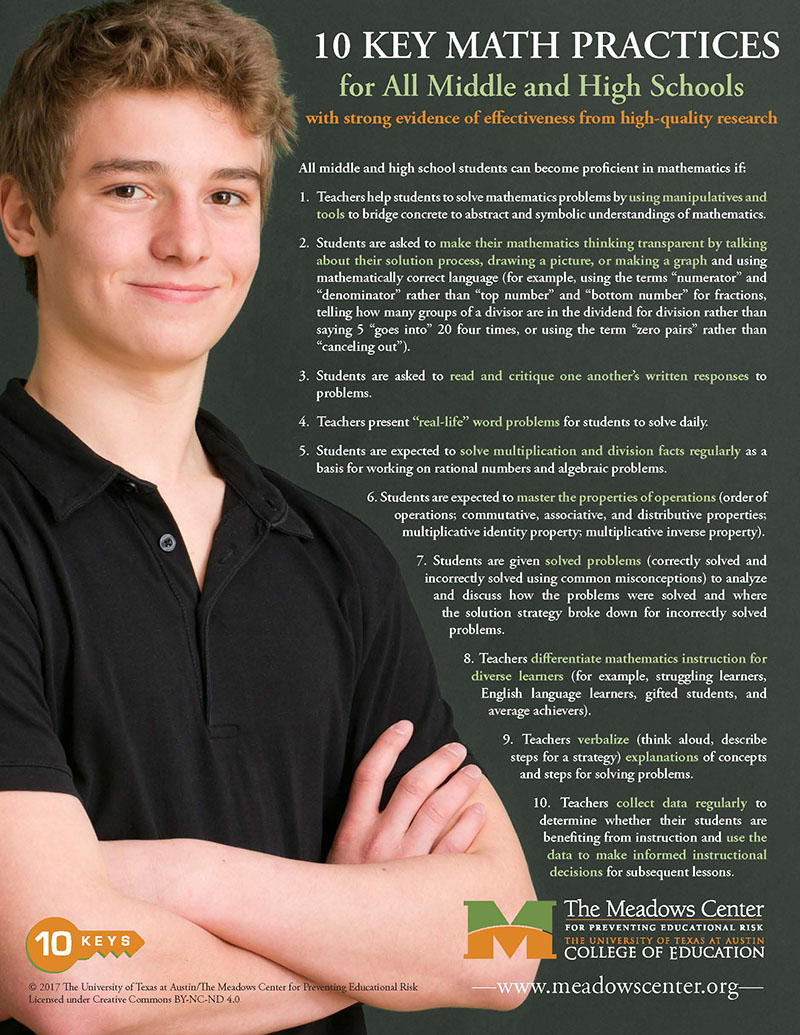
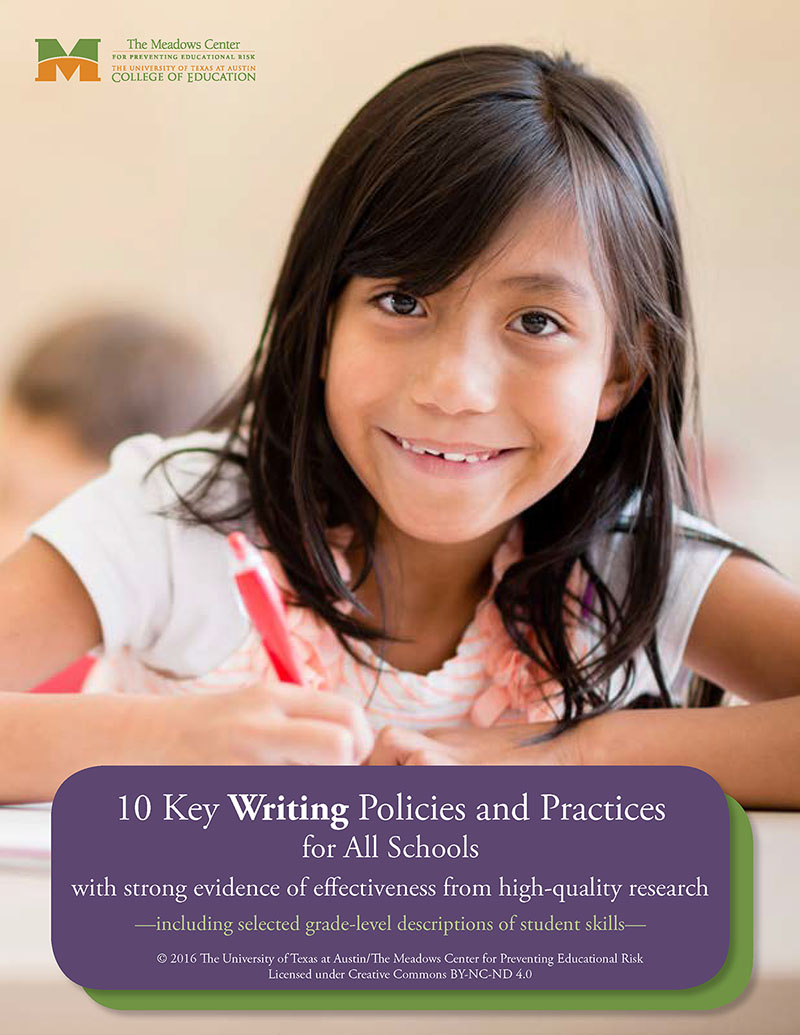
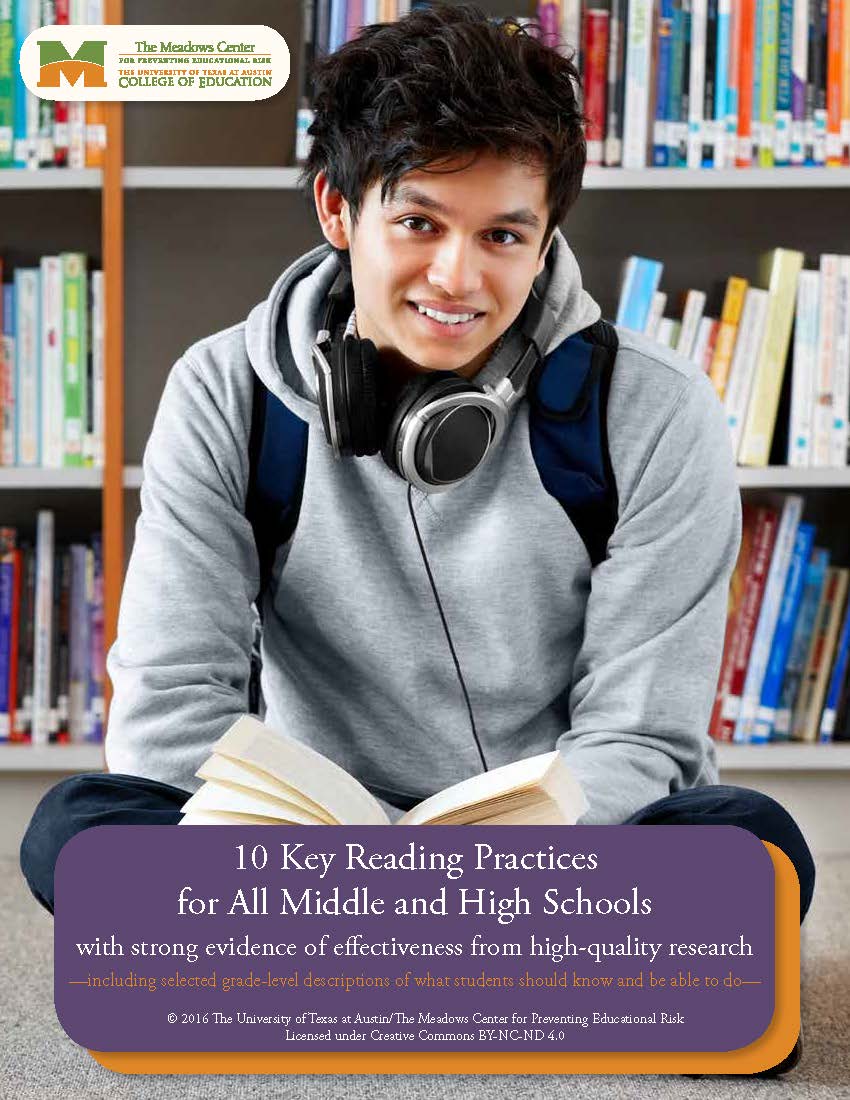
Increasing the Use of Evidence-Based Practices
We challenge educators to commit to using evidence-based practices in the upcoming school year and use these “10 Key” lists to determine whether current instructional practices are associated with improved outcomes for students (i.e., whether adequate evidence supports their continued use) and to replace ineffective practices with those that are supported by high-quality evidence. Schools, teachers, and students face limitations (budget, instructional time, prior knowledge) on a regular basis, but using evidence-based practices—those that have been tested in rigorous research studies—can improve instruction and learning at a faster rate and for more students than practices not based in research.
Check out the following sites to learn more about evidence-based practices:
What Works Clearinghouse
Doing What Works Library
Best Evidence Encyclopedia
Feedback? Suggestions?
Contact us if you have suggestions for other “10 Key” briefs or need help identifying specific practices to support learners at your campus or district.
